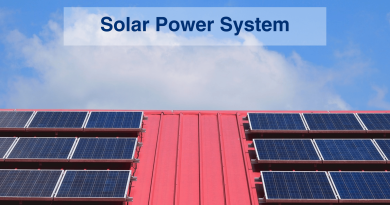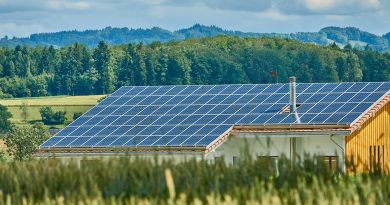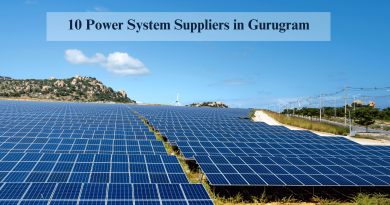Enhance Your Home with a Grid Connected Solar Rooftop System
Grid-connected solar rooftop systems have gained significant popularity in recent years as a reliable and sustainable source of renewable energy. These systems allow homeowners and businesses to harness the power of the sun to generate electricity for their daily needs. However, it is natural for people to have questions and concerns about investing in such a system. In this blog, we will address some common FAQs (Frequently Asked Questions) regarding grid-connected solar rooftop systems, providing you with the information you need to make an informed decision.
1. How does a grid-connected solar rooftop system work?
A grid-connected solar rooftop system consists of solar panels mounted on the roof of a building. These panels comprise photovoltaic cells that convert sunlight into direct current (DC) electricity. The DC electricity is then converted into alternating current (AC) by an inverter, making it compatible with the electrical grid. Any excess electricity generated by the solar system is fed back into the grid, and credit is given to the owner through a net metering arrangement with the utility company.
2. What are the benefits of a grid-connected solar rooftop system?
Grid-connected solar rooftop systems offer numerous benefits. Firstly, they generate clean, renewable energy, reducing reliance on fossil fuels and helping to mitigate climate change. Additionally, they can significantly lower electricity bills by offsetting a portion of the energy consumed from the grid. Furthermore, excess electricity generated by the system can be sold back to the grid, providing an additional source of income. Finally, grid-connected systems are reliable and require minimum maintenance, ensuring peace of mind for the system owner.
3. Is my roof suitable for a grid-connected solar system?
Most rooftops are indeed suitable for installing a grid-connected solar system, as long as they receive adequate sunlight throughout the day. Ideally, a south-facing roof with minimal shading is optimal, as it maximizes the system’s energy generation potential. However, east- or west-facing roofs can still be utilized effectively. Additionally, the roof must have enough space to accommodate the solar panels, considering factors such as obstructions like chimneys or skylights. It is recommended to consult a solar installer who can evaluate your specific roof’s suitability.
4. How much does a grid-connected solar rooftop system cost?
The cost of a grid-connected solar rooftop system depends on various factors, including the system size, quality of components, installation complexity, and local market conditions. On average, the cost ranges from $10,000 to $30,000 for residential installations, with larger commercial systems costing significantly more. However, it is important to consider the long-term financial benefits, such as reduced electricity bills and potential income from selling excess electricity, when evaluating the system’s cost.
5. What is the payback period for a grid-connected solar system?
The payback period for a grid-connected solar system varies depending on the system cost, electricity rates, and the amount of sunlight received. On average, residential solar systems have a payback period of 5 to 10 years. However, the payback period can be shorter in areas with high electricity rates and generous government incentives. It is advisable to perform a financial analysis or consult with a solar professional to determine the specific payback period for your location and circumstances.
6. What maintenance is required for a grid-connected solar rooftop system?
Grid-connected solar rooftop systems are relatively low maintenance. Generally, they require periodic cleaning of the solar panels to remove dirt and debris that may affect energy generation. It is recommended to clean the panels with water and a soft cloth or hire professional cleaning services for safety and efficiency. Additionally, professional system inspections every few years can ensure optimal performance and identify any potential issues before they escalate.
7. Can I use a grid-connected solar system during a power outage?
During a power outage, a grid-connected solar system alone cannot power your home or business. This is a safety requirement to prevent electricity from flowing back into the grid and potentially harming utility workers who are repairing the power lines. However, there are options available, such as integrating battery storage systems or installing a backup generator, to provide backup power during outages. Discuss your specific needs with a solar installer to determine the best solution for your circumstances.
Conclusion
Elevate your home with SolarClue®’s grid-connected solar rooftop system, seamlessly blending aesthetics with sustainability. This innovative system integrates solar panels with the utility grid, providing continuous power, potential savings through net metering, and reduced environmental impact. With efficient installations and guidance on government incentives, SolarClue® ensures a seamless transition to clean energy for homeowners. Monitor and optimize your system remotely with advanced solutions. Join us in embracing a sustainable lifestyle, reducing carbon footprints, and contributing to environmental conservation. Contact SolarClue® today, and let’s enhance your home with the power of grid-connected solar solutions for a greener future.
A grid-connected system seamlessly integrates solar panels on your rooftop with the utility grid, providing clean energy and reducing dependence on conventional sources.
In daylight, solar panels generate electricity, with excess sent to the grid. During non-daylight hours, power is drawn from the grid as needed.
Homeowners benefit from continuous power supply, potential savings through net metering, and reduced environmental impact.
Standard grid-connected systems shut down during outages for safety. For uninterrupted power, hybrid systems with backup capabilities are recommended.
Installation times vary but are generally efficient. SolarClue® ensures prompt and professional installations for a seamless transition to clean energy.
Yes, net metering allows homeowners to receive credits for surplus electricity sent back to the grid, potentially reducing future utility bills.
Yes, SolarClue® guides homeowners to maximize benefits from available government incentives, enhancing the financial appeal of solar installations.
SolarClue® provides advanced monitoring solutions, empowering homeowners to track and optimize system performance remotely for increased efficiency.
Absolutely, SolarClue® offers tailored solutions, ensuring efficient energy production aligned with diverse requirements.
Homeowners contribute to reduced carbon emissions, fostering a sustainable lifestyle and supporting environmental conservation.




